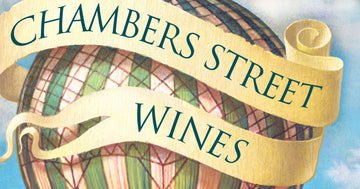Icons of Champagne: Agrapart, Filaine, Bouchard, Laval and more!
12/16/2024

At Chambers Street Wines we are blessed to work with an array of dedicated and talented growers. Careful work in the vines (mostly organic or biodynamic) and cellar (mostly non-interventionist) produce wines that, in addition to being delicious, seem to offer deeper dimensions of terroir expression than other wines of their appellation. That they are able to do this regularly, often transcending vagaries of vintage, is more inspiring still. From this array of riches, today we are elated to highlight 4 outstanding growers whose wines have come to define the region: the champagnes of Pascal Agrapart, Alexandre Filaine, Cedric Bouchard, and Georges Laval... As a last minute addition, and for some extra fun, we added a few more wines, from Pierre Peters and a few cuvées from Aurelien Suenen!
With 62 parcels mostly spread across the grand cru villages of Avize, Cramant, Oiry, and Oger (per Peter Liem on his excellent website ChampagneGuide.net) Pascal Agrapart farms his vines conscientiously, avoiding herbicides, pesticides, and choosing to till the soils to encourage the roots to go deeper. In the cellar he ferments in a combination of tank and wood, with the vintage wines seeing significant time on the lees. The resulting Champagnes are deeply mineral and display great distinction between individual cuvées. All are nervy, balancing power with precision, with great expression of soils and subsoils, be they chalk, clay, or a combination thereof. This transparency shows across the entire lineup, from the generous non-vintage 7 Crus which is made up of Grand Cru Chardonnay from parcels located across the seven Côte des Blancs villages where Agrapart has vines, to Experience, a vintage-dated cuvée For lovers of terroir and Champagne, Agrapart produces Champagnes that are immensely compelling.(John McIlwain)
While there are a multitude of fascinating growers in Champagne (and quite a few characters), one of our absolute favorites is the singular Fabrice Gass from the tiny house Alexandre Filaine in Damery. Thoughtful and without pretense, Fabrice makes memorable wines in the manner Champagne was produced 100 years ago. Farming is organic, though not certified, fermentation is with native yeasts in very old barrels from Bollinger, where he was employed for years. Further, the age of the barrels and the low pH of the must prevents malolactic fermentation, lending cut and drive to the wines. And continuing with the one-man-band theme, the bottles are hand-riddled and manually disgorged. A visit to Fabrice’s tiny domaine is to see meticulously farmed parcels and well-considered vinification. And while the winemaking is as traditional as it comes, the wines are inspiring in their concentration, depth, and poise, with ripe red fruits, creamy texture, and a profound stoniness at their core. (John McIlwain)
Among the visionary growers of Champagne, Cédric Bouchard of Roses de Jeanne might be considered something of an auteur. Which is to say that all of his efforts in the vines and cellar advance his vision: that expression of each vineyard is paramount. Contrary to the Champenois tradition of blending, each cuvée is derived from one grape and one parcel and one vintage. The grapes are vinified to maximize the sense of terroir and fruit while eliminating those elements that Bouchard finds extraneous. To this end the base wines are fermented in stainless steel (he has described wood as “makeup”), he never chaptalizes, and always vinifies without filtering, fining or cold stabilization. Finally, the wines are bottled with no dosage under less pressure than other Champagnes to produce a more delicate bead, thereby lending more transparency to the terroir within. There is a great purity to these Champagnes, which are taut, dry, vinous, and frank in their minerality. (John McIlwain)
There's something inspiring about the wines of Champagne Georges Laval made by the ebullient Vincent Laval. Sure, the wines are delicious, precise, and substantial, but they have an inner vibrance deriving from their distinct terroir and longtime natural viticulture. If anything, the Champagnes could be described as self-assured. The Lavals have been farming organically since 1971, trading parcels with their neighbors along the way to craft larger contiguous blocks to facilitate this. After meticulous selection at harvest the grapes are pressed in a traditional 2000kg Coquard vertical press. The vins clairs are fermented with native yeasts, aged in barrels, bottled with low sulfur and typically without dosage. The south-facing, ampitheatre-shaped village of Cumières located on the southern slope of the Montagne de Reims, overlooking the Marne River is something of a sun trap and is often the first village to begin the harvest. The Laval wines reflect this warm microclimate with mouth-filling, beautiful fruit, tempered by incisive minerality derived from the old vines and organic farming. This ripeness allows for bottling without dosage without sacrificing charm or length on the finish. Barrel-aging also adds a light oxidative burnished note to the wines lending further complexity and nuance to their wines. Anyone who has had a bottle from Laval at some point in their wine-drinking career will invariably remember it. It's not just the density and precision of the wines, or the oxidative flair. There is a certain singularity to the wines that leaves a lasting impression.
For some extra fun, we added a few more wines, from Pierre Peters and a few last bottles from Aurelien Suenen!


